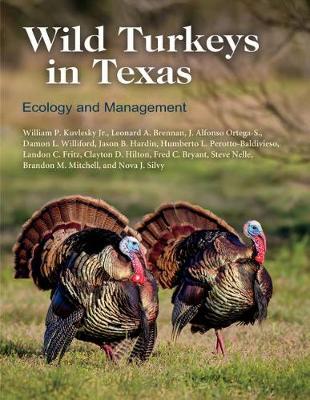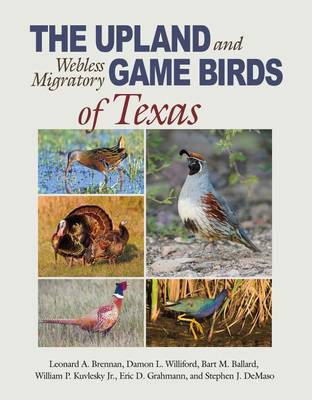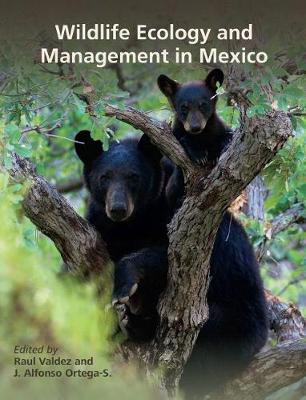Perspectives on South Texas
4 total works
Wild Turkeys in Texas addresses important aspects of wild turkey ecology and management in Texas, but its principles are applicable anywhere Eastern, Rio Grande, or Merriam's turkeys exist. This book marks the continuation of one of the biggest success stories in the research, restoration, and management of the wild turkey in North America.
White-Tailed Deer Habitat
by Timothy Edward Fulbright and Jose Alfonso Ortega-Santos
In this second, full-colour edition, revised and expanded to include the entire western United States and northern Mexico, Fulbright and Ortega-S. provide a carefully reasoned synthesis of ecological and range management principles that incorporates rangeland vegetation management and the impact of crops, livestock, predation, and population density within the context of the arid and semiarid habitats of this broad region. As landowners look to hunting as a source of income and to the other benefits of managing for wildlife, the clear presentation of the up-to-date research gathered in this book will aid their efforts. Essential points covered in this new edition include: White-tailed deer habitat requirements; Nutritional needs of White-tailed deer; Carrying capacity; Habitat management; Hunting.
Focused across political borders and written with an understanding of environments where periodic drought punctuates long-term weather patterns, this revised and expanded edition of White-Tailed Deer Habitat: Ecology and Management on Rangelands will aid landowners, researchers, and naturalists in their efforts to integrate land management and use with sound ecological practices.
The Upland and Webless Migratory Game Birds of Texas
by Leonard A. Brennan, Damon L. Williford, Bart M. Ballard, William P. Kuvlesky, Eric D. Grahmann, and Stephen J. DeMaso
From cultural significance to taxonomy and evolutionary history, this volume provides a wealth of background information on these species. Additionally, the book offers illustrated species accounts, detailed range maps, and information about habitat and management requirements, hunting regulations, and research priorities. Readers will gain a deeper understanding of these game birds and the array of terrestrial and wetland landscapes key to their survival. This will serve as a convenient and thorough reference volume for wildlife biologists and enthusiasts, as well as landowners and hunters.
Wildlife Ecology and Management in Mexico
by Raul Valdez and Jose Alfonso Ortega-Santos
Mexico faces several challenges to wildlife management and conservation efforts. While there is increased public education and acknowledgment of the valuable benefits wildlife provides, there is still much work to do to incentivize conservation efforts. Fortunately, there is growing recognition that Mexico's wildlife resources can be a critical component in the rural economic development of the country.
Bringing together an international team of wildlife experts across North America, Wildlife Ecology and Management in Mexico provides information on the status, distribution, ecological relationships, and habitat requirements and management of the most important game birds and mammals in Mexico. It also reviews current threats and challenges facing wildlife conservation as well as strategies for resolving these issues. This reference is a valuable tool for wildlife biologists, wildlife management professionals, and anyone interested in conserving Mexico's wealth of natural resources. By laying out the challenges to conservation research, editors Raul Valdez and J. Alfonso Ortega-S. hope to encourage interdisciplinary communication and collaboration across borders.



